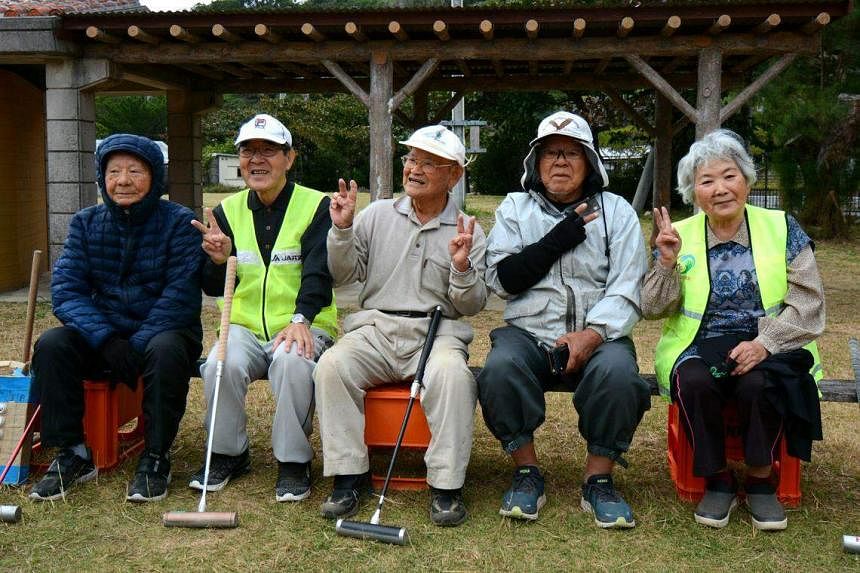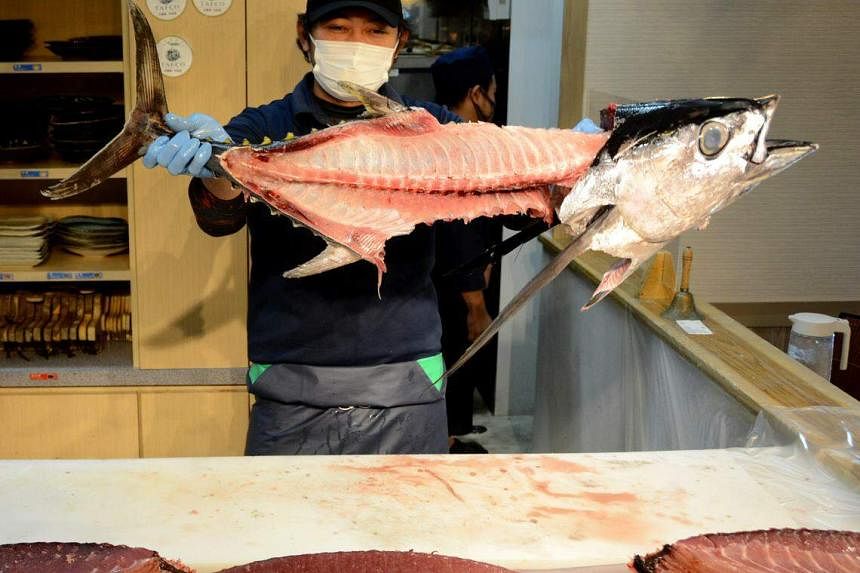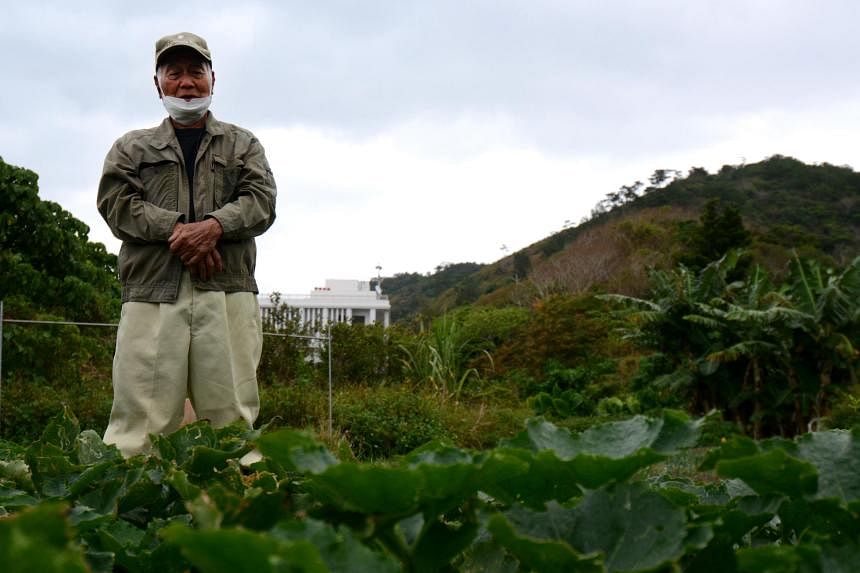OKINAWA – Ten minutes into a conversation with Mr Kansei Arashiro, it becomes clear that purple sweet potato is not solely responsible for the energetic farmer reaching the ripe old age of 86.
He tells us about the joy of farming, chuckling about how he turns his vegetables into art by twisting them into vaguely humanoid shapes.
“I do it for fun,” he says in Japanese to our media group.
“Are you vegetarian?” someone asks him, hoping to hear about the merits of a plant-based diet.
“I eat a lot of vegetables, yes,” he replies, then quickly adds: “But I also eat everything. We should all have fun and be happy.”
The real secret to the octogenarian’s longevity, it seems, is sheer joy, coupled with a strong sense of community and an active lifestyle.
The agricultural expert wakes up at 6am every day, cycles to his mini farm from his home nearby, and takes afternoon naps. He also spends time interacting with aged neighbours and friends in Ogimi village in Okinawa, Japan.

It is perfectly in line with what researchers have determined are the factors behind the longevity of residents of Japan’s southern islands. But seeing this up close makes it very real, and it is illuminating to chat with one of the many living examples of how to grow old gracefully.
Okinawa is now easily accessible. After a hiatus of more than three years, Jetstar Asia has begun flying direct from Singapore to Okinawa, the only airline to do so.
The flight takes about five hours, while flights routing through Osaka or Tokyo take at least 10 hours.
Japan has always been a darling of Singapore travellers, and Okinawa is in the spotlight again after Netflix series Live To 100: Secrets Of The Blue Zones (2023) featured it as an area with a higher-than-average concentration of residents with extra-long life expectancies.
Ogimi, a village of 3,000, has more than 20 active centenarians, an impressive proportion that has earned it the label, “village of longevity”.
“It’s not that anyone here deliberately tried to live longer,” says Ogimi’s director of tourism, Mr Fumimaru Osaki. “But by doing everyday things like farming and living close to nature, they ended up keeping active and staying independent.”
The easy pace of life on the islands is also a major contributing factor, he adds.
Wherever you are, you are never far from one of the numerous farms that dot the islands or the beaches that line their coast. Mountains are always in view, and even Naha – the capital of Okinawa prefecture – feels more like a big town than a city.

Such scenes are a feast for the eyes. This laid-back corner of Japan is also a refreshing alternative to the mainland.
This is partly a result of Okinawa’s mixed history and culture. Originally an independent nation ruled by the Ryukyu kingdom, the islands thrived on trade with China and countries in East and South-east Asia.
They became part of the Japanese shogunate in the 1600s, and a prefecture of Japan in the 1800s, explaining why the food, architecture, and culture have a distinctive Chinese touch.

At the same time, Okinawa’s sub-tropical climate and environment give it Hawaiian vibes, which are very much bolstered by the popularity of spam – yes, the luncheon meat – in local fare.
Introduced by the United States – which took over administration of the islands after some of the most fearsome battles of World War II, and returned them to Japan in 1972 – spam can be found in a number of dishes, including the local version of onigiri (Japanese rice balls).
This unique mix adds to the charms of Okinawa, which draws millions of tourists looking for a spot of sunshine and a break from city life each year. More than half are Japanese from the mainland, and some have never gone back.
“I came here when I married my husband, who is from Okinawa,” says Ms Seiko Suzuki, our tour guide. “But now, I don’t think I can go back to the mainland. Life is so slow and peaceful here.”
But that does not mean Okinawa is a retirement village or isolated island getaway where there is not a lot for visitors to do.
There are a host of experiences, many of them sea-related.

Go snorkelling or scuba diving. Or, if you want a close-up view of sea creatures without getting wet, hitch a ride on a glass-bottom boat. Also, visit Busena Marine Park’s underwater observatory or Okinawa Churaumi Aquarium, one of the world’s largest.
There are ample opportunities for hiking and cafe-hopping for the land-based, and families can keep restless kids occupied with activities such as glass-blowing and making sweet potato tarts.

If you have time to venture beyond Okinawa’s main island, check out one of the outlying islands. The prefecture includes more than 150 islands, with the major, inhabited ones accessible by ferry.
Do not miss the food, of course. The local sashimi is extra fresh. Unless you are anti-greens, you will do well to check out the produce that Okinawa is well known for.

This includes goya (bittergourd), umibudo (sea grapes), mozuku (seaweed) and, of course, beni imo, Okinawa’s famous purple sweet potato that is believed to contribute to its residents’ longevity.

Even the sake has been localised. Awamori – Okinawa’s version of the classic Japanese alcoholic beverage – is made from Thai rice instead of Japanese rice, and is distilled instead of brewed, making for a more potent swig.
Or you could just kick back, relax in one of the many cafes lining the beaches, and soak in the peace and calm of Okinawa, which is really its best draw – and one of its secrets to longevity.
- Leslie Koh is a former Straits Times journalist. His trip was hosted by Jetstar Asia.
Getting there
Jetstar Asia (jetstar.com) flies to Naha, Okinawa, three times a week. Prices start at about $320 for a return flight, depending on when you book.
Staying there
Okinawa has numerous accommodation options, from luxury and budget hotels to beach resorts and homestays.

